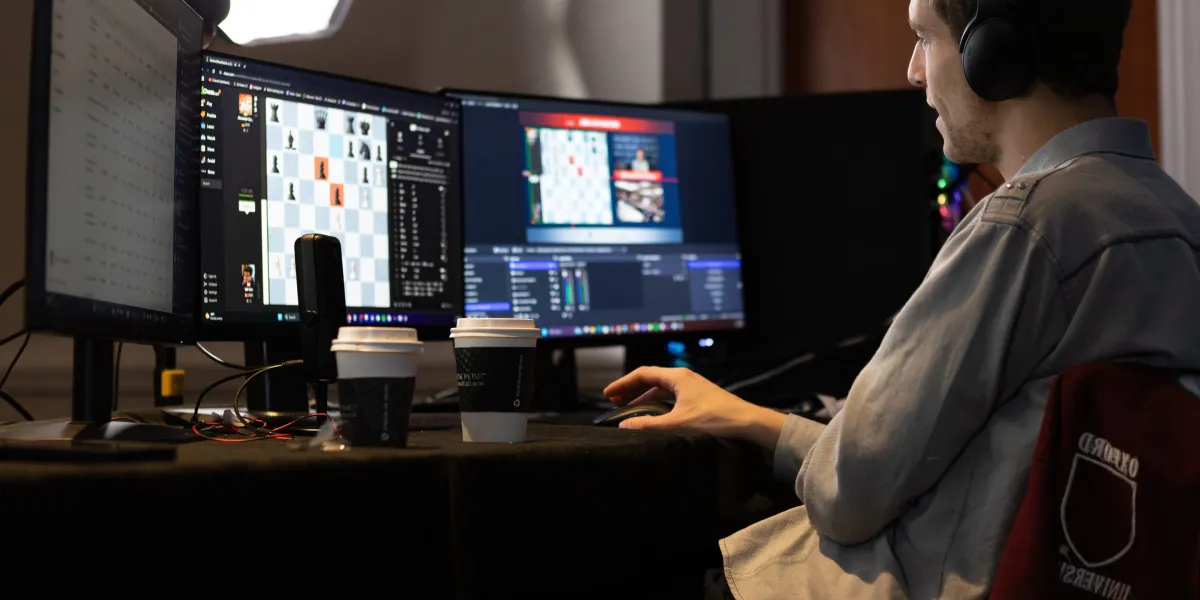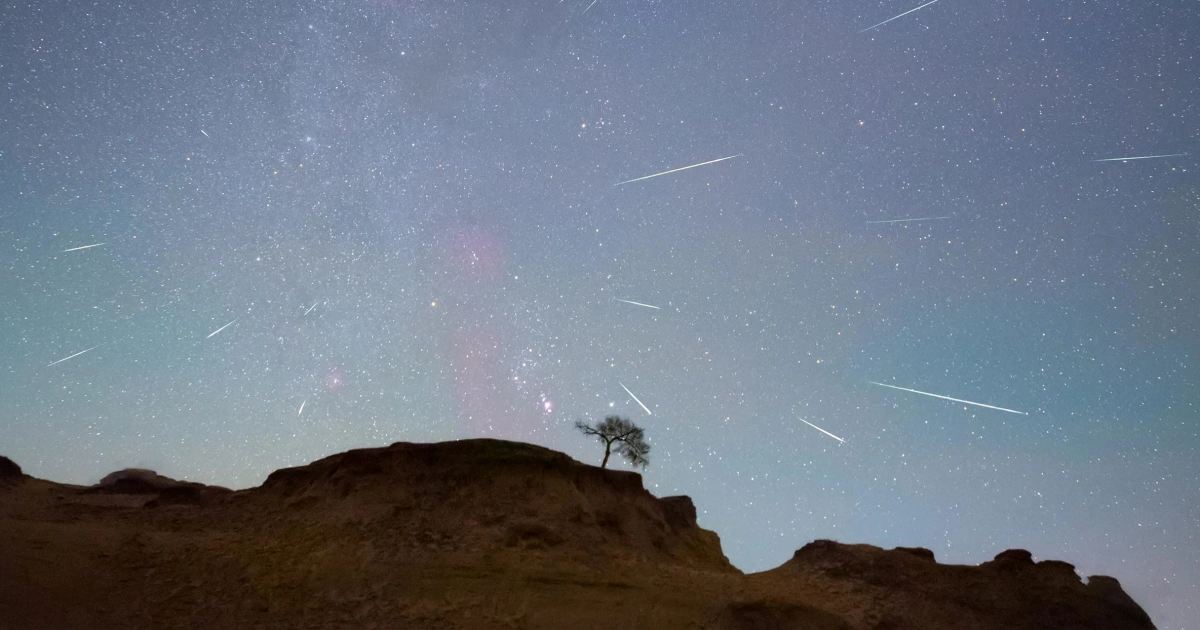Copyright Scientific American

For a fraction of a second after the big bang occurred 13.8 billion years ago, most physicists believe, the newborn universe dramatically ballooned in size, jumping from being smaller than a proton to being bigger than a softball. Such an exponential expansion may seem minor, but it is equivalent to a grape in the palm of your hand swelling to become tens of thousands of times larger than the observable universe. Known as cosmic inflation, this strange, fleeting period is usually considered to have been an expansion of near nothingness because, at the time, most of the universe’s elementary particles had yet to blink into existence. In other words, the standard view of cosmic inflation suggests the universe didn’t really begin as a hot, dense fireball but rather as a cold void that only later reheated into a plasmatic soup of particles by some poorly understood process. But a new theoretical study published in the journal Physical Review Letters suggests that inflation may have been warm from the start. In fact, the researchers find, a warm period of inflation that began to populate the universe with matter could have naturally arisen from interactions within physics’ Standard Model, the theory that describes the fundamental forces and elementary particles in the universe. “What we have shown with this paper is that actually being warm during inflation is extremely generic and extremely simple,” says its lead author Kim Berghaus, a postdoctoral scholar in theoretical physics at the California Institute of Technology. The solution to the problem of cold inflation requires only one unconfirmed type of particle, she says. “It takes us to this footing of ‘This may have actually occurred in nature, and we can go look for it,’” Berghaus adds. On supporting science journalism If you're enjoying this article, consider supporting our award-winning journalism by subscribing. By purchasing a subscription you are helping to ensure the future of impactful stories about the discoveries and ideas shaping our world today. Inflation itself is a big mystery. Most physicists think it happened in the first 0.00000000000000000000000000000001 second (10–32 second) of cosmic time, by which point the universe had expanded by a factor of as much as 1050. The reason anyone takes this mind-boggling idea seriously is that it would explain what the big bang alone can’t—namely, why the universe appears so extremely uniform at very large scales. Studies of the big bang’s afterglow—an all-sky whisper of radiation called the cosmic microwave background, or CMB—show it to be basically the same everywhere. The most straightforward way to account for this preternatural smoothness is a period of inflation that provides time for the baby universe to reach a uniform temperature. Meanwhile inflation would also have magnified tiny random fluctuations in the early universe, creating density variations in the primordial plasma. These acted as seeds for cosmic structures; as their gravity glommed together more matter, denser regions would eventually grow to become star-filled galaxies and galaxy clusters. As of yet, there is no direct observational evidence for inflation, so sorting out its details is a task for theorists. Initially, physicists envisioned inflation as a cold process that involved energy fields that permeated all of space. It was powered by a field with high potential energy, called the inflaton field, which behaved a bit like a ball rolling down a hill and transforming its potential energy into kinetic energy as it descends. In the beginning, this “hill” was gentle, almost flat, and as the inflaton “ball” rolled down, the exponentially expanding universe rapidly became less dense. The “hill” eventually bottomed out when the expanding universe was diluted to nearly a vacuum. At this point, the rolling inflaton “ball” could essentially carom around the resulting “valley,” unleashing its kinetic energy to create many elementary particles and reheat the universe. Only then did the “newborn universe as fireball” scenario proceed. But precisely how this reheating step would have occurred wasn’t well-understood, says Vahid Kamali, a visiting professor at McGill University and an associate professor at Bu-Ali Sina University in Iran, who studies early-universe cosmology and wasn’t involved in the new research. Physicists wondered if this step was needed or if there was a way for the whole inflationary process to stay warm. Arjun Berera, a theoretical physicist at the University of Edinburgh, who was also not involved in the new study, was the first to propose warm inflation in 1995. Cold inflation was in some ways too simple, Berera says. “When systems interact, we expect there to be friction and particle production,” he says. “And inflation, in the standard picture, didn’t have that.” Berera’s first model was initially dismissed. Critics argued that warm inflation would have effectively burned itself out, prematurely churning out interacting particles that would have sapped its potential energy. In the hill analogy, the inflaton “ball” would have suddenly plunged down a too-steep slope, bringing the whole process to an abrupt end. “The challenge has always been how to find the model that produces the particles but doesn’t make such a steep hill,” Berera says. Berera and his colleagues published a paper in 2016 that found such a model using interactions and fields similar to those known in the Standard Model. Berghaus and her co-authors Marco Drewes of the Catholic University of Leuven in Belgium and Sebastian Zell of Ludwig Maximilian University of Munich take this a step further in their new paper, firmly situating warm inflation in the Standard Model itself. Their calculations show that a feeble interaction between the inflaton field and elementary particles called gluons would be sufficient to warm up inflation. Gluons carry the strong nuclear force, which glues together fundamental particles called quarks to make protons and neutrons. “What they have done is to make this connection that you can have warm inflation with Standard Model interactions,” says Rudnei Ramos, a theoretical physicist at Rio de Janeiro State University in Brazil, who co-authored the 2016 paper but was not involved in the new study. These Standard Model interactions would have heated the inflating universe, sidestepping the complication of needing a subsequent reheating phase. In cold inflation, the initial fluctuations are all inconceivably small and quantum, Berera says, and must later transition to larger, so-called classical interactions during the reheating. The trouble is that no one really understands how that process unfolds. But in warm inflation, “it’s not a big issue,” he says, “because they’re already classical.” The new model has one key caveat: the particle that creates the inflaton field is not yet known to exist. It would be a very light, chargeless particle called an axion, Berghaus says. Physicists have been on the quest for axions for decades because some possible variants of these particles might constitute most or all of the universe’s dark matter. There are hints that axions might exist, including a faint background glow in space that was detected by the New Horizons spacecraft in 2022. If they do exist, trillions of them should be afloat in every cubic centimeter of the solar system. Projects such as the Axion Dark Matter Experiment, a collaboration of the University of Washington, Lawrence Livermore National Laboratory and other institutions, are currently hunting these particles by using intense magnetic fields to convert them to detectable microwave photons. The new model’s reliance on axions suggests that there are two avenues for eventual experimental validation—one via future surveys of the CMB to test some of the model’s predictions and the other via ongoing laboratory-based searches for these elusive particles. While the prospect of testability makes this new model very exciting, Kamali says, there is still much more to be done to reconcile it with other theories in cosmology. One example, he says, is that the size of the inflaton field in the new model doesn’t match predictions from string theory. Even so, the allure of thoroughly explaining cosmic inflation within the Standard Model’s well-known tenets is likely to prove irresistible for eager theorists and experimentalists alike. “In our work, there is an opportunity for a discovery that can probe the connection between particle physics and the big bang,” Berghaus says. “Because our proposed theory connects intimately with the Standard Model, it is testable.”



